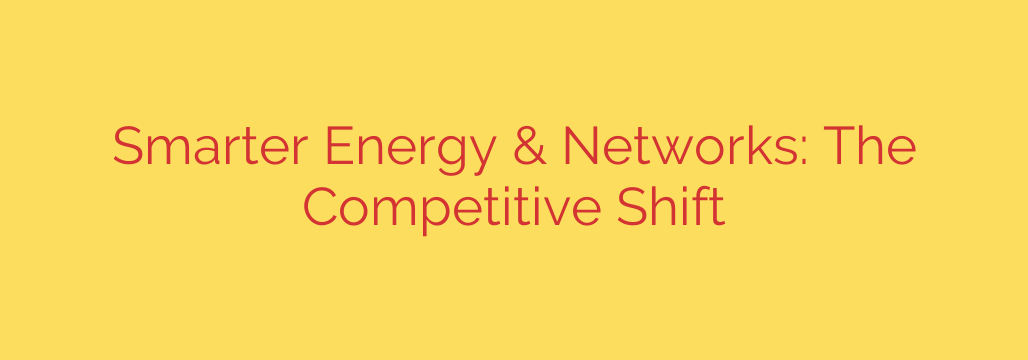
The energy sector is undergoing a profound transformation, driven by the urgent need for sustainability, the rise of renewable energy sources, and rapid advancements in digital technology. This evolution is creating a fundamentally smarter energy system, intricately linked with advanced communication networks. The traditional, centralized model is giving way to a more distributed, dynamic, and complex grid infrastructure.
Key to this shift is the integration of digital technologies. Artificial intelligence (AI), the Internet of Things (IoT), advanced data analytics, and high-speed connectivity like 5G are becoming indispensable tools. These technologies enable real-time monitoring, control, and optimization of energy generation, transmission, distribution, and consumption. This capability is crucial for managing the variability of renewables, optimizing grid performance, and integrating a growing number of distributed energy resources (DERs) such as rooftop solar, battery storage, and electric vehicles (EVs).
This technological convergence is fundamentally reshaping the competitive landscape. Traditional energy utilities face both challenges and opportunities. They must modernize aging infrastructure, adopt new operational models, and compete with or collaborate with new market entrants. Telecommunications companies are playing an increasingly vital role, providing the essential connectivity backbone and exploring new service opportunities within the energy value chain, such as smart metering infrastructure, grid monitoring solutions, and enabling peer-to-peer energy trading platforms. Technology providers specializing in software, hardware, and analytics are also significant players, offering innovative solutions for grid management, demand response, and energy efficiency.
The shift is not just about technology; it’s also about new business models. We are seeing the rise of energy-as-a-service, sophisticated demand-side management programs, virtual power plants aggregating distributed resources, and platforms facilitating greater consumer participation in the energy market. Consumers are becoming more empowered, with access to data about their energy usage and the ability to participate in programs that save money and support grid stability.
Ultimately, the move towards a smarter, more connected energy network is essential for achieving ambitious climate goals, enhancing grid resilience against disruptions, and unlocking new economic value. Success in this evolving environment requires collaboration across sectors, significant investment in modern infrastructure and digital capabilities, and a focus on creating integrated, customer-centric solutions. Companies that can effectively leverage data, technology, and partnerships will be best positioned to thrive in this competitive future.
Source: https://feedpress.me/link/23532/17059105/how-to-create-smarter-networks








